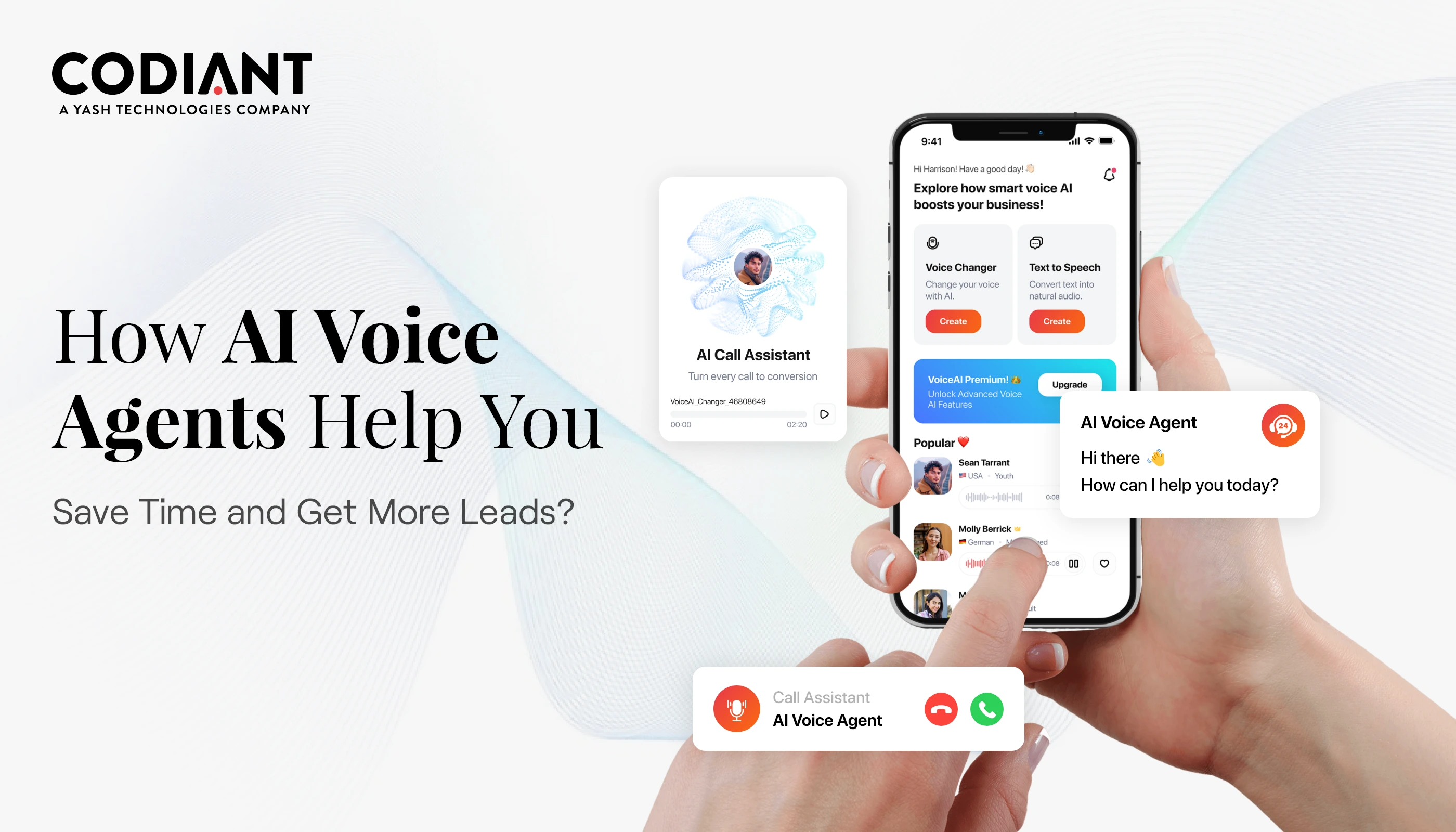Fitness App Development: Types, Key Features, and Cost
Table of Contents
Subscribe To Our Newsletter

“Use it or lose it!” The much-overrated mantra to stay fit is increasingly gaining prominence as we inch closer to a society rushing to get fit overnight. In this run to stay fit, most people tend to lose patience as they fail to measure visible progress.
Fortunately, the launch of many different types of fitness apps bundling mind, body, and soul workshops that also monitors and tracks progress in real-time has brought laurels for fitness freaks of all ages with different goals.
Scoring high on app store meter, fitness apps have leased the phone space from almost every person looking to shed weight, gain muscles, or simply attain wellness. As a result, the app market has got flooded with health, fitness, and wellness apps.
Thus, demanding much more investment in the sector with niche-based functionalities. Taking into consideration, the high search volumes on fitness app development, its key features, app types, and more, we’ve created this article that will hopefully address all your queries and trending market demands in the fitness app market. Keep scrolling.
Fitness App Market Overview- USA
Fitness apps are in rage as the people are paying more attention towards their health and fitness, such apps have become prominent for almost every smartphone user. The COVID-19 impact has accelerated the online fitness app trend to the extent that people are preferring to work out at their homes rather than visiting gyms or fitness centers. In the wake of COVID-19 pandemic, the health concerns and fitness issues burgeoning among people have encouraged millions to indulge into some kind of health activity or exercise.
This ultimately, increased the demand for feature-packed on-demand fitness app development and resulted in the introduction of a spectrum of fitness apps in a short period of time. This could easily be experienced with the advancement of global fitness app market boomed in 2020, with a market size of about $3.5 billion in the US itself. As this soaring online fitness market drives massive installations, the figures are even expected to reach around $14 billion by 2026.
Likewise, the number of fitness app users in the USA was around 62 million in 2018 and is expected to reach more than 86 million users by 2022. As per the market trends, it is expected that fitness app that analyses workout regime, such as miles run or weight lifted is going to be more popular.
Overall, the fitness market will witness significant growth in the next few years. Projecting it as the right time for investors to look into the opportunity in fitness app development to foray in the industry.

Image Source – Statista
If you are already planning to venture into the fitness business industry, then this post can help you understand the types of fitness app development options you can implement; the key features for such applications.
Types of Fitness Apps
Generally, there are three basic types of fitness apps, and the major difference between them is the way they work and store details. Find out in detail, what you need to about such fitness apps before getting into the development phase.
- Diet Planning Apps
- Workout and Exercise Apps
- Activity Tracking Apps
- Yoga and Meditation Apps
1. Diet Planning Apps
The diet planning apps help users to control weight and follow a healthy diet by counting the number of calories intake. Apart from that, the user can also keep track of the number of burned calories, maintain a water balance, and adopt healthy eating habits.
To adopt a healthy lifestyle, it is necessary to monitor the intake of calories along with exercise to get appropriate results. As, both aspects are tightly connected, so you can include both in your fitness app development to serve your customers the best possible manner. It could work as a USP for your business and give you an edge over your competitors. Some of the known nutrition tracking apps available in the market are, MyFitnessPal, Nutrition Facts, Calorie Counter & Diet Tracker, MyPlate Calorie Counter, and many more.
2. Workout and Exercise Apps
The workout and exercise apps cover a broad range of features that serves fitness goal of collecting data about the user’s activities. The main purpose of such workout apps is to demonstrate to users what exercises to do and explain how to do them. Apart from that, such apps are enabled with multiple sensors that monitor heart rate, oxygen level, number of steps taken, etc. While such apps don’t have their own hardware, it require a smartphone to make these sensors work properly. These workout apps can be categorized into three groups;
- Logbook Apps: These apps are like your mobile health trainers, where you can simply define or assign your workout sessions and make your personalized workout and exercise plan. The Logbook apps are quite simple and small in size and works like a to-do list to store your workout information and progress in graphs and stats. Some of the best fitness apps under this category are Strong, HeavySet, Fitbod, and many more.
- Personal Trainer Apps: Personal Trainers are in great demand among people as they can explain and guide how to perform a specific set of exercise or yoga poses along with what purpose it will serve. Likewise, with an online personal training program, the trainer can even demonstrate the complex level of exercises based on the user’s requirements.
It is safer to learn any set of exercises visually otherwise, the exercise could cause a negative impact on body or won’t yield desired results. For such personalized experiences and assistance, people prefer personal training apps. This is providing a good market scope for business seekers to aim for highly interactive and easy-to-use fitness app development to serve the needs of users.
- Fitness Apps Paired with Device: These are the tracking apps paired with wearable. Such apps are in great demand among sports persons/athletes who like to track their every activity during the day on any kind of wearable device. Such devices could be smart watches, activity tracking bands, or any other kind of wearable device.
Some of the best examples of such fitness apps are Google Fit, Apple Health, Samsung Health, Polar Beat, etc.
Read more on Mistakes to Avoid While Developing a Fitness App
3. Activity Tracking Apps
The activity tracking apps collect user data based on their activities. The activities could be walking, running, stair climbing, cycling, quality of sleep, or any other physical activity. Such apps can also monitor heart rate, oxygen level, calories burnt, skin temperature, etc.
In general, the app requires the use of smartphone sensors to track all these activities properly. Activity tracking apps help users to reach the desired goal and monitor their performance. For instance, those who are training for any competition can monitor their performance narrowly.
Now, activity tracking apps became quite common in the market, so it could be quite tricky to come up with a unique idea to introduce your app in the market. Some of the best fitness apps available in the market are Map My Run, Runkeeper, MyFitnessPal, 10K Runner, Fitness Buddy, etc.
4. Yoga & Meditation App
Yoga and Meditation apps are tailored to improve health, de-stress, and work on flexibility—like stretching out sore muscles. Great for users who wish to harmonize their body, mind, and soul rather than build big muscles.
There are many types of yoga asanas for specific body parts that are also designed to generate inner peace through special meditation. Such apps are quite like workout apps that provide different courses and various trainers based on the user’s requirements.
The Yoga & Meditation App allows users to monitor their progress and share it with their trainers. In addition to that, the user can also learn new asanas through videos and personalized trainer classes as per their package selection.
Some of the top yoga & meditation apps available in the market are Yoga Workout, Yoga Studio, Daily Yoga, and Fitbit.
Must-Have Features in Fitness App Development
It’s totally up to you to integrate the features you want to include in your fitness app, in addition to the app design and monetization model. To assist you, we have outlined below some of the must-have fitness app features to secure high user acquisition and engagement rates.
1. Personalized User Experience
Adding personal details, such as age, weight, gender, height, and other physical parameters helps to personalize the complete user experience. With such details, one can provide customized diet plans, training classes, and other customized support to achieve fitness goals.
2. Reminders and Push Notifications
Reminder and Push Notification feature is one of the important features of fitness apps. Through this feature, you can remind your customers about diet plans, training sessions, mealtime, etc. It also enhances the personalized experience of your fitness app users.
3. Activity Summary on Regular Intervals
This feature provides an overview of the user’s fitness regime at regular intervals, such as daily, weekly, monthly, or any customized time duration. It helps the user to evaluate their progress and set a goal as well to achieve a fit and healthy daily regime.
4. Geolocation & Tracking
The geolocation feature in a fitness app allows users to track their routes, directions, and pathways while jogging, running, or cycling. This will also help them to analyze their performance or progress in a period of time.
5. Wearable Device Integration
People use multiple devices for tracking and improving their daily fitness activities. That’s why it is the demand of the tech world to build such an app that facilitates synchronization with a fitness app and mobile device. The device integration feature allows users to see notifications on time and interact with the app during inconvenient situations.
6. Social Sharing
In this social media era, people are obsessed with sharing and showing their accomplishments to a wide group of people at a time. Creating a fitness app integrated with social media feature can help you entice a huge customer base. As sharing and interacting about the fitness app the customer is using will works as free promotion for your business.
7. Gamification
The Gamification feature in your fitness app will make it interactive and interesting for users to stay motivated and enjoy their fitness activities. In this gaming feature, the user will compete with other users, it will ultimately make the whole session quite exciting and interactive. Apart from that, you can add badges, rewards, and other exciting offers to retain users and entice them to work out daily to earn rewards.
8. Video Tutorials or Live Video Streaming
Video Tutorials or live streaming facilitate users to learn exercises through videos rather than hiring any personal trainer. The fitness training video will provide vital tips and methods to perform specific exercises along with what impacts it will have on the various parts of your body. These video tutorials will provide your fitness app business an added benefit among the wide range of fitness apps.
9. In-App Purchases and Safe Payment System
In-app purchases will look like an online store, where customers can buy equipment, proteins, supplements, and health drinks through an online payment mode. Apart from that, the customer can also purchase a premium membership or any periodic subscription through the secure payment system.
10. Nutrition and Recipe Database
For fitness app development, a nutrition and recipe database could be a unique feature where customers can look for health diet recipes from numerous easy-to-cook meals. The variety of available meals will help a person to plan their diets easily along with detailed preparation instruction and nutritional values.
11. Online Consultations
A lot of people prefer personalized assistance and consultation while starting a fitness regime. Instead of training with wrong posture and incorrect usage of gym equipment, it is safer to hire a personal trainer or opt for personalize online consultation. Hence, in your fitness app development, you can add this feature based on customer demand.
Related Reading: How to Create a Workout and Personal Fitness Trainer App?
12. Barcode Scanner
Barcode Scanner can make the database navigation and search easier when a user filter any meal from a pool of item list. The barcode scanner can also add the product by using a smartphone camera and even identifies the manufacturer. In this way, user can get detailed information about their meal in a few seconds.
13. Building A Community
A competitive approach in fitness training can yield good results in maintaining fitness and health. So, providing such an experience for users to engage and interact with like-minded people, which motivates them to do well. Apart from that, from the business point of view, it can be a good feature to retain users for longer.
14. Sleep & Water Tracker
Proper sleep and adequate water intake are important for every individual’s good health. This app feature tracks the no. of hours you slept. While Water Tracking features send timely reminders via push notification feature to drink water after a period of time to keep you hydrated and energized during the day regardless of your busy schedule.
15. Customized Diet Plans
Customized diet plans are prepared for each user specifically based on their health condition and the amount of energy they need. So, if you are allergic or have any specific requirements, then such diet plans are made while taking your concerns into consideration. Customized diet plans save your time in deciding what healthy food to eat; you can simply purchase the food staples based on the diet plan and you are sorted.
The inclusion of such features in the relevant fitness app will definitely outshine your app in the competitive market and optimize the fitness app development cost. The market of fitness apps is expanding and depicting a bright future ahead, so one can plan to get into the fitness industry.
Developing a fitness app requires strategic planning, the right technology stack, and a deep understanding of user needs. While the process can be complex, overcoming fitness app development challenges can lead to an innovative, feature-rich product that truly stands out in the market. A well-designed app enhances user engagement, delivers personalized experiences, and motivates users to stay consistent with their fitness goals. When done right, it not only earns positive reviews and recommendations but also builds long-term user loyalty and trust.
The Total Cost To Develop a Fitness App
Now as we narrow down to the fitness app project price estimation, it’s essential to know in prior the major cost drivers of app development. As the cost to develop an app depends on multiple factors like:
- Number of app platforms
- Complexity of features
- UI/UX design
- Post maintenance features
- Discovery and research process
- Location of app development company
Since the dependency is on the above factors, it becomes hard to give an exact quote for your project’s price. But still, we can share a ballpark figure! The average cost to develop a fitness app varies from USD 30,000 to USD 50,000.
How Codiant Can Help You?
Codiant has more than a decade of experience in developing and delivering on-demand apps for a range of industries, where Fitness app development is the niche that our developers hone a special expertise.
We have a team of subject matter experts and UX architects that helps our clients in fitness industry do the market research, competitor, and SWOT analysis to understand the key market trends and discover unearthed features that could help their app stand out among the fitness freaks and yet be the inspiration for many.
Our ever-growing fitness portfolio is brimming with its key clients that covers new editions in fitness app categories like subscription-based fitness app, breathing and meditation, fitness marketplace and online gym workout and exercise app.
We also have a white-label market-ready fitness app solution known as GymFitApp that can help you gain quick market access with least possible investment. Alternatively, if you want to customize this mobile app with few changes then we can even invest our time and resources to replace few of its existing features, branding elements, and scale it as per your business model.
Featured Blogs
Read our thoughts and insights on the latest tech and business trends
How to Digitize Your Home-Service Business with an AI-Powered Platform
- November 21, 2025
- Home Services
The home-service industry - covering HVAC, plumbing, electrical, and cleaning—has long relied on manual scheduling, phone-based bookings, and paper invoices. But as customer expectations shift toward instant communication and transparency, these traditional processes are no... Read more
How a Voice AI Agent Can Help You Get More Appointments and Leads
- November 17, 2025
- Artificial Intelligence
Missed calls, delayed responses, and lost leads are silent revenue killers for many businesses. In today’s fast-moving market, customers expect instant engagement - and that’s exactly where a voice AI agent for appointment booking steps... Read more
How to Integrate AI in Recruitment and Cut Hiring Time by 70%
- November 13, 2025
- Artificial Intelligence
Recruiting teams face a clear operational challenge: too much manual work and not enough qualified talent reaching the finish line. Even with modern ATS systems, most hiring workflows still depend on human-driven screening, coordination, and... Read more




